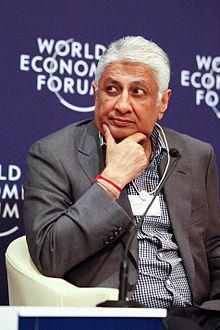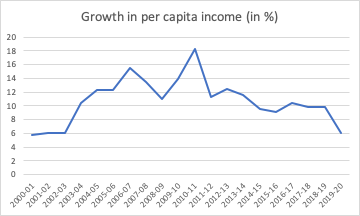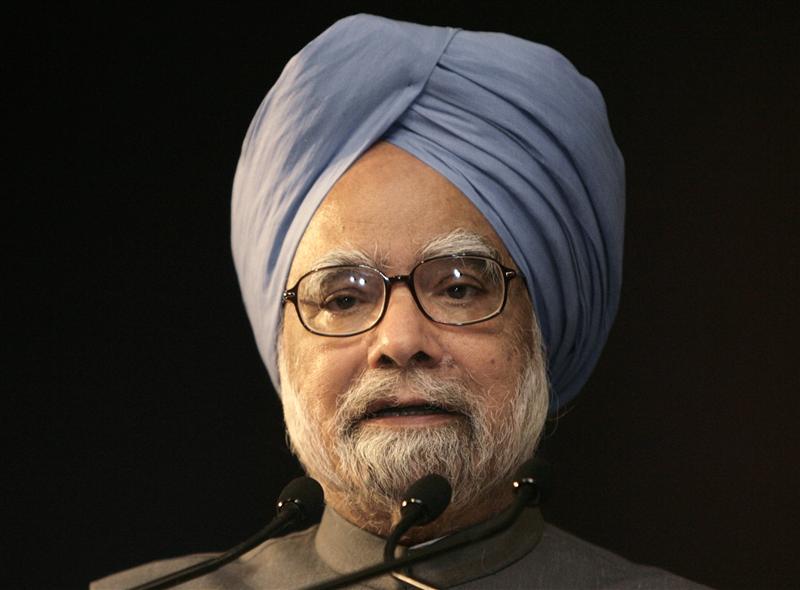
Ajit Gulabchand, the chairman and managing director of Hindustan Construction Company (HCC) said in an interview yesterday: “a 50 basis points (bps) rate cut is welcome, but it is insufficient. …I expected at least 300 bps but if not that, 200 bps as an initial cut to create the impact that is necessary.” Among other things, Gulabchand is famous for having built the Bandra-Worli sea-link in Mumbai.
Gulabchand was reacting to the Reserve Bank of India’s decision to cut the repo rate by 50 basis points (one basis point is one hundredth of a percentage) to 6.75%. Repo rate is the rate at which the Reserve Bank of India (RBI) lends to banks and acts as a sort of a benchmark to the interest rates that banks pay for their deposits and in turn charge on their loans.
While industrialists are used to being unreasonable, this is among the most irresponsible statements I have come across from an industrialist, in a while. Allow me to explain.
Central banks do not take extreme steps unless it’s an emergency. When was the last time you heard a big central bank dropping rates by 300 basis points at one go? Or even 200 basis points? Or even 100 basis points for that matter?
So, central banks work in a step by step process and not in a random manner. The question is why is Gulabchand sounding so desperate? The answer can be found out from his profit and loss account statement.
The operating profit (or earnings before interest taxes depreciation and amortisation) of HCC excluding its other income, for the period of April to June 2015 stood at Rs 161.8 crore. The total amount of interest that the company paid on its debt during the same period was at Rs 167 crore.
Hence, the interest coverage ratio of the company is less than one. The interest coverage ratio is calculated by dividing the interest on debt that a company pays during a period by its operating profit. An interest coverage ratio of less than one essentially shows that the company is not making enough money to be able to pay the interest on its debt. And that is not a good situation to be in.
What this basically means is that HCC has taken on more debt than it should have. In this scenario Gulabchand is desperate for the interest costs of the company to go down. The total debt of the company as on March 31, 2015, stood at Rs 5,011 crore. On this the company paid an interest of Rs 651.1 crore during the course of April 2014 to March 2015.
This means an effective interest rate of 13% (Rs 651 crore as a proportion of Rs 5,011 crore). If the interest rates fall by 300 basis points, HCC’s effective rate of interest will come down to 10%, assuming that the banks totally pass on the cut to the borrowers.
At 10%, the interest outflow for HCC would be Rs 501.1 crore (10% of Rs 5,011 crore). This is Rs 150 crore lower than the amount the company paid as interest during the period April 2014 to March 2015. And this is a huge amount given that the profit after tax of HCC during the period was Rs 81.6 crore.
So, it’s understandable why Gulabchand is desperate for significantly lower interest rates. The same logic holds true for a spate of other corporates who are deep in debt and are having a tough time servicing their debt. And given half a chance they talk about lower interest rates.
The question nonetheless is can India afford interest rates which are 300 basis points lower than they currently are. Let’s do a little thought experiment here.
The repo rate before the RBI cut it by 50 basis points was at 7.25%. Let’s say instead of cutting the repo rate by 50 basis points, the RBI had cut it by 300 basis points, as Gulabchand wanted it to. Let’s further assume that banks passed on this cut (I know I am being unreasonable here, but just humour me for a moment). They cut deposit interest rates by 300 basis points and they cut lending rates by 300 basis points as well.
What would happen here? Given that the repo rate would fall to 4.25%, we would have a situation where deposit rates would suddenly fall around 5%. So far so good.
In the monetary policy statement released yesterday the RBI expects consumer price inflation is to reach 5.8% in January 2016. So we will have a scenario where interest on fixed deposits are in the region of 5% and the inflation is at 5.8%. This will mean a negative real return on the fixed deposits, as the rate of inflation will be greater than the interest being offered on fixed deposits. And that will not be a good thing.
Take a look at the accompanying chart. The green line represents the consumer price inflation. The red line represents the average rate of interest at which the government borrows.
As can be seen from the chart, between 2007-08 and 2013-2014, the consumer price inflation was greater than the average interest rate at which the government borrowed. The rate of interest at which the government borrows is the benchmark for all other kinds of loans and deposits.
As can be seen from the chart, the government managed to borrow at a rate of interest lower than the rate of inflation between 2007-08 and 2013-14. And if the government could raise money at a rate of interest below the rate of inflation, banks couldn’t have been far behind.
Hence, the interest offered on fixed deposits by banks and other forms of fixed income investments was also lower than the rate of inflation. The inflation was consistently greater than 10% during the period, whereas the fixed deposit rates ranged between 8-10%.
And this had negative consequences, as household financial savings fell. Household financial savings is essentially a term used to refer to the money invested by individuals in fixed deposits, small savings scheme, mutual funds, shares, insurance etc. A major part of household financial savings in India is held in the form of bank fixed deposits and post office small savings schemes.
The household financial savings have fallen from 12% of the GDP in 2009-10 to 7.5% in 2014-15. The number was at 7% in 2012-2013. This happened because the rate of return on offer on fixed income investments (like fixed deposits, post office savings schemes and various government run provident funds) was lower than the rate of inflation.
This led to people moving their money into investments like gold and real estate, where they expected to earn more. It also led to a huge proliferation of Ponzi schemes in several parts of the country.
Hence, the money coming into fixed deposits and post office income schemes slowed down leading to a situation where household financial savings fell. This, in turn, led to high interest rates. As mentioned earlier the effective rate of interest that Gulabchand’s HCC paid on its debt during the period between April 2014 and March 2015, was 13%.
If the household financial savings are to be rebuilt, the rate of interest on offer to depositors has to be significantly greater than the rate of inflation. A major reason why household financial savings have risen between 2012-2013 and 2014-2015 has been because the rate of interest on fixed income investments has been higher than the rate of inflation.
In fact, the RBI governor Raghuram Rajan has often talked about a real rate of interest of 1.5-2% on fixed income investments (i.e. fixed deposit interest rates are higher than the rate of inflation by 1.5-2%). This is a very important factor that needs to be kept in mind by the RBI while deciding on interest rates.
The basic point is that the interest rates are not just about corporates and borrowing, they are also about savers. If people don’t save enough through fixed deposits and other fixed income investments, the rate of interest is going to go up.
And in order to ensure that people save enough and do not divert their money into other investments, it is important that the rate of interest on offer on fixed income investments continues to be significantly higher than the rate of inflation.
This also ensures that over the long term interest rates will remain at more reasonable levels. Meanwhile, if that means that the corporates are hurt, then so be it.
The column originally appeared on The Daily Reckoning on Oct 1, 2015






